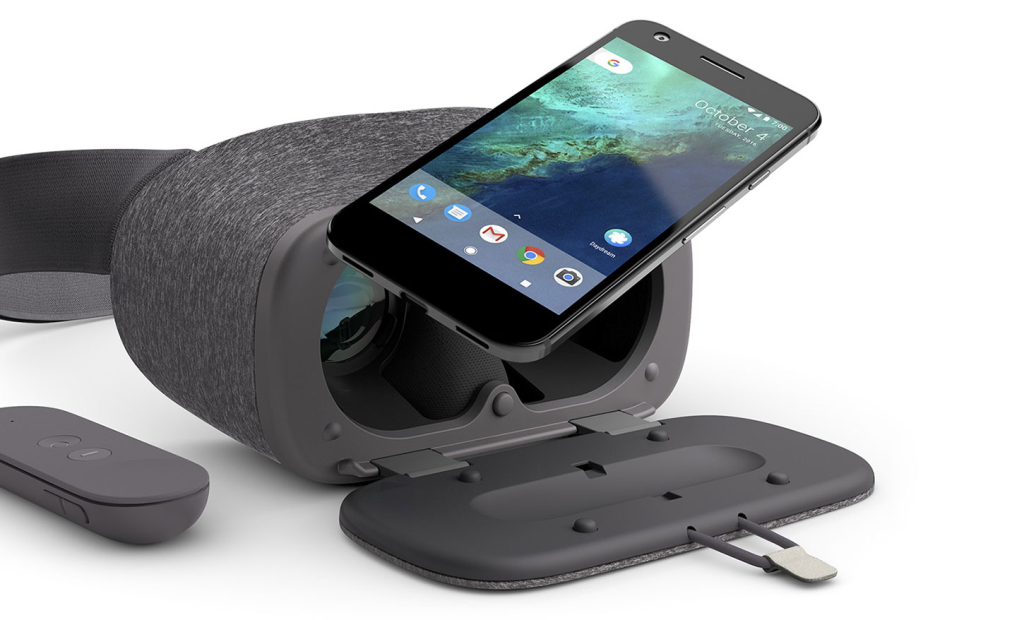Virtual Reality (VR) gaming has undergone a remarkable transformation in recent years, evolving from an expensive niche hobby requiring powerful PCs and dedicated spaces to an accessible experience available directly through smartphones. Mobile VR gaming represents one of the most significant democratizations of immersive technology, allowing millions of users to experience virtual worlds with devices they already own. This evolution has created new opportunities for developers, reshaped gaming experiences, and hints at an exciting future where the boundaries between physical and digital entertainment continue to blur.
The Evolution of Mobile VR Technology
The journey of mobile VR from novelty to mainstream technology reveals a fascinating progression of innovation and accessibility.
Early Mobile VR Platforms
The first widely recognized mobile VR solution emerged with Google Cardboard in 2014, which transformed smartphones into basic VR headsets using inexpensive cardboard viewers. This was followed by more refined options:
- Google Cardboard: The DIY approach that introduced millions to basic VR concepts
- Samsung Gear VR: A collaboration with Oculus that offered improved optics and dedicated controllers
- Google Daydream: A fabric-covered headset with controller that elevated the mobile VR aesthetic
- Numerous third-party viewers: Budget options that expanded accessibility across different phone models
These early platforms demonstrated VR’s potential but faced limitations in tracking accuracy, visual fidelity, and interactive capabilities.
Technological Advancements
Several key technological developments have dramatically improved mobile VR experiences:
- Higher resolution displays: Modern smartphones with 2K+ resolution screens provide sharper VR visuals
- More powerful processors: Mobile chips now handle complex 3D environments with reasonable frame rates
- Advanced sensors: Improved gyroscopes and accelerometers deliver more accurate head tracking
- Dedicated VR chipsets: Specialized hardware acceleration for VR rendering tasks
- Eye tracking technology: Emerging in premium devices to enable foveated rendering and natural interaction
Current Mobile VR Landscape
Today’s mobile VR ecosystem has evolved beyond simple viewers to include:
- Standalone headsets with mobile processors: Devices like Oculus Quest 2 that offer untethered VR without requiring a separate smartphone
- Advanced smartphone-based solutions: Higher quality viewers with better optics and tracking capabilities
- AR/VR hybrid experiences: Applications that blend virtual elements with the real world captured by phone cameras
- Cloud-streamed VR gaming: Emerging services that offload processing to remote servers, enabling more complex experiences

The Gaming Experience Transformation
Mobile VR has fundamentally changed how players interact with games, introducing new design paradigms and experiences that weren’t possible in traditional mobile gaming.
Immersion Through Presence
The defining characteristic of VR gaming is the sense of presence—the feeling of actually being inside the virtual environment:
- 360-degree viewpoints: Players can look in any direction naturally by turning their head
- Spatial audio: Sound that appears to come from specific locations in the virtual space
- Scale perception: Experiencing virtual environments and objects at life-size proportions
- Environmental immersion: The outside world is visually blocked, reducing distractions
Natural Interaction Models
Mobile VR has introduced more intuitive ways to interact with game environments:
- Head-tracking controls: Using head movement to aim, select, or navigate
- Gaze-based interaction: Selecting objects by looking at them
- Hand controllers: Dedicated controllers that track hand position and movement
- Gesture recognition: Using the phone’s camera to track hand movements without controllers
- Voice commands: Supplementing visual interfaces with speech recognition
New Gaming Genres and Adaptations
The unique capabilities of mobile VR have spawned entirely new game types and reinvented existing ones:
- Virtual tourism experiences: Exploration-focused games that transport players to detailed recreations of real or fantastic locations
- Immersive puzzlers: Puzzle games where players physically interact with 3D mechanisms
- 360-degree shooters: Action games that surround the player with threats from all directions
- Perspective-based challenges: Puzzles that require physically looking at environments from different angles
- Social VR spaces: Multiplayer environments where players interact through avatars with natural body language
Case Study: Success Stories in Mobile VR Gaming
Several games have demonstrated the potential of the mobile VR format:
Beat Saber: Though now available across VR platforms, this rhythm game’s success showed how physical movement and immersion could create compelling gameplay loops accessible to casual and hardcore gamers alike.
Keep Talking and Nobody Explodes: This cooperative bomb-defusal game brilliantly leverages VR’s isolation factor, requiring the VR player and non-VR teammates to communicate precisely.
Virtual Virtual Reality: A narrative adventure that cleverly plays with nested realities while accommodating the limitations of mobile VR hardware.

Overcoming Technical Challenges
Mobile VR developers face unique constraints that have driven creative solutions and innovations.
Performance Optimization
Creating immersive experiences within mobile hardware limitations requires specialized approaches:
- Foveated rendering: Rendering higher detail where the player is looking while reducing detail in peripheral vision
- Optimized artwork: Stylized visuals that convey atmosphere without requiring photorealistic textures
- Clever level design: Creating environments that feel expansive while limiting visible complexity
- Loading zone management: Seamlessly streaming content to prevent performance drops
Comfort and Accessibility
Addressing physical comfort has been crucial for mainstream adoption:
- Motion sickness reduction: Implementing design patterns that minimize vestibular discomfort
- Adjustable experiences: Options for seated, standing, or room-scale play depending on available space
- Comfort ratings: Clearly communicating potential discomfort levels to players before purchase
- Accessibility features: Options for players with different physical capabilities
The Business of Mobile VR Gaming
The mobile VR market presents unique opportunities and challenges for developers and publishers.
Market Size and Growth
The accessible nature of mobile VR has expanded the potential audience significantly:
- Over 100 million Google Cardboard viewers have been shipped worldwide
- Standalone mobile VR headset sales continue to accelerate year-over-year
- The global mobile VR market is projected to reach $15 billion by 2025
- Enterprise and educational adoptions are creating additional revenue streams beyond entertainment
Monetization Strategies
Developers have adapted monetization approaches to the unique aspects of VR:
- Premium pricing: Higher price points than typical mobile games, reflecting the enhanced experience
- Experience-based pricing: Charging separately for different VR “experiences” within a platform
- Subscription services: All-access passes to libraries of VR content
- In-app purchases: Virtual items or environment enhancements

Distribution Challenges
Getting VR games to consumers involves considerations beyond traditional mobile app distribution:
- Platform fragmentation: Supporting various headset specifications and capabilities
- Discovery issues: Helping potential players find VR titles in crowded app stores
- Demo requirements: The need to convey immersive experiences through 2D screenshots and videos
- Hardware verification: Ensuring compatibility across devices with different specifications
Social and Cultural Impact
Mobile VR gaming is influencing not just how we play, but how we connect and experience digital content.
Transforming Social Interaction
VR introduces new dimensions to online social experiences:
- Embodied communication: Interacting through avatars that convey body language and physical presence
- Shared experiences: Feeling genuinely present together in virtual spaces
- New social norms: Emerging etiquette and behavior standards in VR environments
- Accessibility across distances: Creating meaningful connection despite physical separation
Bridging Entertainment Mediums
Mobile VR is blurring the lines between gaming and other forms of entertainment:
- Interactive storytelling: Narrative experiences where players physically inhabit the story
- Virtual concerts and events: Live performances attended in virtual spaces
- Gaming as fitness: VR games designed specifically for physical exercise
- Educational gaming: Immersive learning experiences that leverage presence for engagement
According to mobile gaming experts, the increasing sophistication of smartphone VR capabilities is creating opportunities for developers to craft experiences that were once only possible on high-end dedicated hardware.
The Future of Mobile VR Gaming
Several emerging trends suggest where mobile VR gaming is headed in the coming years.
Technological Horizons
Upcoming innovations promise to further enhance mobile VR experiences:
- 5G integration: Ultra-fast, low-latency connections enabling streaming of complex VR content
- Advanced haptics: More sophisticated physical feedback systems for greater immersion
- AI-enhanced rendering: Using machine learning to improve visual quality without increasing processing demands
- Mixed reality elements: Blending virtual content with real-world environments through phone cameras
- Brain-computer interfaces: Experimental technologies that could eventually allow control through thoughts
Emerging Gameplay Trends
New ways of playing are constantly evolving in the mobile VR space:
- Location-based experiences: Games that adapt to and incorporate the player’s physical location
- Cross-reality gaming: Experiences that transition between VR, AR, and traditional screen gaming
- Persistent virtual worlds: Mobile access to ongoing virtual spaces that continue to evolve
- User-generated content: Tools that allow players to create and share their own VR experiences
- Asymmetric multiplayer: Games where VR and non-VR players participate together in different roles
Getting Started with Mobile VR Gaming
For those interested in exploring mobile VR gaming, several entry points exist depending on budget and interest level.
Entry-Level Options
Beginning your VR journey can be surprisingly affordable:
- Cardboard viewers: Available for $15-25, compatible with most modern smartphones
- Plastic VR viewers: Step up in comfort and durability for $25-50
- Used Gear VR or Daydream: Previous generation dedicated viewers available on secondary markets
Mid-Range Solutions
For a more refined experience without major investment:
- Standalone mobile headsets: Entry-level options like Oculus Go (discontinued but available used)
- Premium smartphone headsets: Higher quality viewers with enhanced optics and tracking
Premium Mobile VR
The highest quality experiences currently available in the mobile VR category:
- Oculus Quest 2: Technically a standalone device, but runs on advanced mobile chipsets
- Pico Neo: Competing standalone headsets with mobile processors
- Cloud VR services: Subscription services that stream high-end VR to mobile devices
Essential Mobile VR Games to Try
For new VR gamers, these titles provide excellent introductions to the medium:
- Vader Immortal: A Star Wars experience that combines storytelling and lightsaber combat
- Virtual Virtual Reality: A quirky narrative adventure with unique VR interaction
- Land’s End: A beautiful puzzle adventure designed specifically for mobile VR
- Eclipse: Edge of Light: An atmospheric exploration game with intuitive controls
- Moss: A charming adventure combining third-person control and VR perspective
Conclusion
Mobile VR gaming represents a remarkable convergence of technologies that has brought immersive virtual experiences to a mass audience. What began as a novelty with cardboard viewers has evolved into sophisticated experiences that continue to push the boundaries of what’s possible on mobile hardware. The accessibility of these platforms has democratized both VR consumption and creation, allowing more developers and players to participate in this emerging medium.
As smartphones become more powerful, connectivity improves through 5G, and AR capabilities integrate more seamlessly with VR features, we can expect mobile virtual reality to continue its rapid evolution. The distinction between mobile and dedicated VR will likely continue to blur, with experiences becoming more immersive and interactive regardless of platform.
Whether you’re a casual gamer curious about virtual worlds or a dedicated enthusiast seeking portable immersion, the mobile VR ecosystem now offers entry points at virtually every price point and interest level. As this technology continues to mature, it promises to transform not just how we play games, but how we connect, learn, and experience digital content in our increasingly virtual world.
